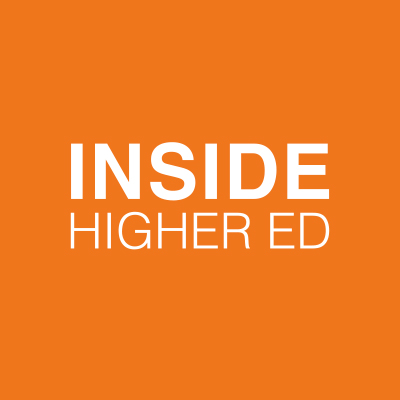
University Business
October 18, 2023 Admissions, Enrollment Management Trends
Despite a boost in applications across multiple graduate and postgraduate programs from fall 2021 to fall 2022, enrollment decreased. Overall first-time enrollment fell by 4.7%. Doctoral degree enrollment dipped by 4.4%, while Master’s degrees experienced an uptick, at 2.5%. While graduate certificates have experienced impressive growth between 2016-17 and 2021-22 at 10.5%, they, too, declined overall by 1.2%.

Inside Higher Ed.
October 26, 2023 Admissions, Enrollment Management Trends
According to the National Student Clearinghouse Research Center’s latest enrollment report, undergraduate enrollment climbed by 2.1 percent this fall, its first total increase since 2020. Enrollment increases for Black, Latino and Asian students—by 2.2 percent, 4.4 percent and 4 percent, respectively—were especially notable after last year’s declines. However, freshman enrollment declined by 3.6 percent, nearly undoing last year’s gain of 4.6 percent and leaving first-year enrollment less than a percentage point higher than it was in fall 2021, during the height of the pandemic. Those declines were most pronounced for white students and at four-year institutions with lower acceptance rates, reversing years of growth trends for the most selective colleges and universities.

The Chronicle of Higher Education
October 02, 2023 Student Success, Value and Affordability
A recently announced national initiative plan has more than 360 colleges agreeing to make their financial aid packages more transparent. This includes a mix of public, private and for-profit institutions. About a third of the institutions participating have 40% or more students who were awarded Pell grants. Over half of the colleges, on average, awarded less than $5,000 to first-time students.

Inside Higher Ed.
September 18, 2023 Admissions, Enrollment Management Trends
Significant national developments have impacted college admissions in 2023. The Supreme Court’s decision to ban race-conscious admissions will impact the admissions landscape moving forward. Enrollment challenges are ongoing, but colleges remain hopeful about their future enrollment strategies.

Higher Ed. Dive
September 15, 2023 Admissions, Value and Affordability
In a recent Gallup & Walton Family Foundation poll, 85% of Gen Z K-12 students valued college, yet only 62% plan to attend. Fifty-three percent of prospective college-goers expressed affordability concerns. Demographics play a role, with differences in perception based on gender, politics, and racial disparities in affordability and enrollment rates. This situation raises concerns for higher education’s future amid declining enrollment rates.

Higher Ed. Dive
September 14, 2023 Student Success, Value and Affordability
A federal judge deemed the DACA (Deferred Action for Childhood Arrivals) program unlawful but didn’t order its immediate termination, leaving its fate uncertain. This implies that eligible students who have not been able to enroll in DACA can’t receive benefits like in-state tuition and scholarships, who were otherwise qualified. This case may be headed to the Supreme Court.

Inside Higher Ed.
August 30, 2023 Research, Student Success
A report by Lumina Foundation and Gallup shows that higher education offers numerous benefits beyond employment and earnings. A study revealed that individuals with higher education show more positive outcomes, with 92% graduate degree holders voting in federal elections, compared to 59% of those without postsecondary education. Although correlation doesn’t mean causation, the main challenge lies in convincing people to attend college for non-fiscal factors.

Higher Ed. Dive
August 28, 2023 Admissions, Enrollment Management Trends
The Free Application for Federal Student Aid (FAFSA) is undergoing a major revamp for the first time in 40 years to create a more streamlined process for students applying for federal aid. The form is expected to be released in December, two months later than usual. Colleges and universities must proactively prepare for the delay by reviewing admissions deadlines and financial aid practices.

Higher Ed. Dive
August 22, 2023 Admissions, Enrollment Management Trends
The Common Application’s direct admissions experiment involving 13 institutions and 33,000 students showed promise. Students with direct admissions offers were twice as likely to apply to those colleges. However, only 6% of the pool applied through this model, focusing on marginalized groups. This resulted in a 4% increase in underrepresented minority applicants and a 3% increase in low-income neighborhood applicants. Researchers suggest that while direct admissions helps, simplifying financial aid processes and providing support are essential for improving higher education access.

Inside Higher Ed.
August 14, 2023 Admissions, Enrollment Management Trends
Scrutiny intensifies over legacy admissions in colleges after Supreme Court’s affirmative action ban. Lawmakers are questioning traditional practices of giving preference to the children of alumni and are suggesting reforms to ensure a fair and inclusive admissions process.